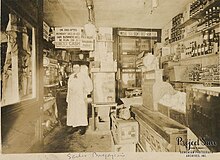
Massachusetts is home to one of the largest Armenian American communities in the United States, with significant concentrations in the Greater Boston area, particularly in Watertown, Cambridge, and Belmont.
History

The first recorded Armenian to live in North America was Martin the Armenian in 1618 but the first significant wave of Armenian immigrants arrived in Massachusetts in the late 19th and early 20th centuries. These early immigrants were fleeing economic hardship and political persecution in the Ottoman Empire. The influx of Armenians increased significantly following the Armenian Genocide of 1915–1917, when many survivors sought refuge in the United States. Massachusetts, with its burgeoning industrial economy and welcoming communities, became a prime destination.

The establishment of the Armenian community in Worcester began in 1867, shortly after the arrival of Garo from Bitlis. Garo was initially employed as a servant for missionary George C. Knapp. According to oral history, an Irish laundrywoman working at the same household persuaded Garo that he could earn more by working in local factories, rather than continuing with his meager monthly wage of 75 cents. Motivated by this advice, Garo transitioned to factory work, where he earned a significantly higher daily wage of $1.75. This opportunity attracted more Armenians to Worcester, all seeking to achieve their own version of the American dream. One of the major contributions of Armenians to American commerce was oriental rugs one of the first to do so in Boston was an Armenian named Hagop Bogigian.

During the late 19th and early 20th centuries, Worcester, Massachusetts became a major hub for Armenian immigrants in the United States. This connection was initially established by New England Protestant missionaries who had worked in the Ottoman Empire and facilitated Armenian converts' migration to America (Deranian, 1998). As Armenians fled violent persecution in their homeland, they brought with them their political organizations, churches, businesses, and a resilient culture, transforming Worcester into a vibrant Armenian community. Upon their arrival, Armenians faced new legal challenges in the U.S. due to their racial classification. Court cases in 1909 (In re Halladjian) and 1925 (U.S. v Cartozian) ruled that Armenians were legally considered white, allowing them to obtain American citizenship and opportunities for prosperity (Haney-Lopez, 1996). While the Armenian Genocide has been widely discussed by historians, less attention has been given to the experiences of Armenians in the U.S. within the context of their legal classification as white.

Watertown became a key destination for Armenian immigrants, particularly after the Hood Rubber factory opened in 1896. This period coincided with the mass migration of Armenians fleeing the massacres of the 1890s, establishing a direct connection between the Armenian provinces and East Watertown. Following the genocide, the influx continued, and by 1930, the Armenian population in Watertown had grown to over 3,500, accounting for nearly ten percent of the town's residents. Over the years, Watertown evolved into a major hub of Armenian culture and heritage, even as later generations moved to nearby suburbs.

According to the 2020 U.S. Census, there are approximately 30,000 Armenian Americans in Massachusetts. The largest concentration is in the Greater Boston area, especially in Watertown, which is often considered the heart of the Armenian American community in the state. Other significant populations can be found in Cambridge, Belmont, Worcester, and Springfield.
Notable people
- Hagop Bogigian - Opened oriental carpet store on Harvard Square in the 1870s, and is known as the "first Armenian American millionaire"
- Peter Koutoujian - is an American politician who is the current Sheriff of Middlesex County, Massachusetts and a former member of the Massachusetts House of Representatives.
- Gabrielle R. Wolohojian - serves as an associate justice of the Massachusetts Supreme Judicial Court.
- Moses H. Gulesian - Armenian businessman
- Stephen P. Mugar - founder of Star Market chain
- Noubar Afeyan - co-founder of Moderna
- Varaztad Kazanjian - founder of modern plastic surgery
- Haig Kazazian - Kazazian determined the molecular basis of single-gene genetic disorders such as hemoglobinopathies and hemophilia and introduced prenatal diagnosis for such disorders.
- Arlene Francis - game show panelist, actress, radio and television talk show host.
- Hagop Bogigian - business owner
- Alan Hovhaness - composed over 500 works, including symphonies and operas.
- George Keverian - American Democratic Party politician who served as the Speaker of the Massachusetts House of Representatives from 1985 until 1991.
- Rose and Sarkis Colombosian - founded Colombo Yogurt
- Edward Avedisian - abstract painter who came into prominence during the 1960s. His work was initially associated with Color field painting and in the late 1960s with Lyrical Abstraction.
- Mugar family - well known family in New England for business and philanthropy roles
Education
St. Stephen's Armenian Elementary School in Watertown offers bilingual education for Pre-K through 5th grade, emphasizing Armenian history, language, and culture.
Erebuni Armenian School in Belmont, MA.
References
- Pilibosian, Helene. They Called Me Mustafa: Memoir of an Immigrant. p. 54.
- The Armenians of Massachusetts. US Works Progress Administration. Federal Writers' Project. 1937. p. 36.
- ^ ""Yankees of the East": The Racial History of Twentieth Century America Through the Eyes of Worcester Armenians and Their Descendants".
- "Global Boston BU".
- DiCanio, Margaraet. Memory Fragments from the Armenian Genocide. p. 88.